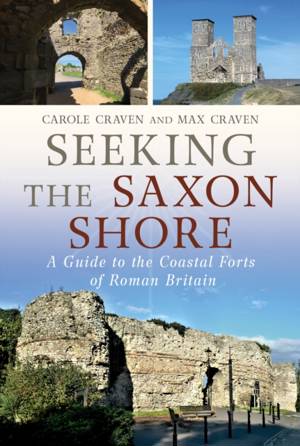
- Afhalen na 1 uur in een winkel met voorraad
- Gratis thuislevering in België vanaf € 30
- Ruim aanbod met 7 miljoen producten
- Afhalen na 1 uur in een winkel met voorraad
- Gratis thuislevering in België vanaf € 30
- Ruim aanbod met 7 miljoen producten
Zoeken
Seeking the Saxon Shore
A Guide to the Coastal Forts of Roman Britain
Carole Craven, Maxwell Craven
Hardcover | Engels
€ 34,95
+ 69 punten
Omschrijving
In the later third century AD, the outer reaches of the Roman Empire were being threatened on all sides by hostile powers. Along the southern and eastern coasts of Britain, a series of ten, possibly twelve, vast fortified enclosures were built beside strategic harbours to defend against external threats, mainly from Germanic marauders. Through sixteen centuries impressive vestiges of most of them have survived, although three have vanished virtually without trace. Several became the sites of Norman castles, others have associations with early Christianity, all have a story to tell.
Taking the reader from the colossal surviving fort at Portchester in Hampshire to the empty, windswept site of Brancaster on the north Norfolk coast, Seeking the Saxon Shore is both a practical guide to locating and exploring these ancient sites and a handbook for bringing them to life. In describing the origins of the forts, their ancient settings, their functions and subsequent histories, this compelling guide will enable the reader, in the modern landscape, to recognise and visualise the distant past.
Taking the reader from the colossal surviving fort at Portchester in Hampshire to the empty, windswept site of Brancaster on the north Norfolk coast, Seeking the Saxon Shore is both a practical guide to locating and exploring these ancient sites and a handbook for bringing them to life. In describing the origins of the forts, their ancient settings, their functions and subsequent histories, this compelling guide will enable the reader, in the modern landscape, to recognise and visualise the distant past.
Specificaties
Betrokkenen
- Auteur(s):
- Uitgeverij:
Inhoud
- Aantal bladzijden:
- 208
- Taal:
- Engels
Eigenschappen
- Productcode (EAN):
- 9781781559215
- Verschijningsdatum:
- 30/03/2026
- Uitvoering:
- Hardcover
- Formaat:
- Genaaid
- Afmetingen:
- 171 mm x 248 mm

Alleen bij Standaard Boekhandel
+ 69 punten op je klantenkaart van Standaard Boekhandel
Beoordelingen
We publiceren alleen reviews die voldoen aan de voorwaarden voor reviews. Bekijk onze voorwaarden voor reviews.








